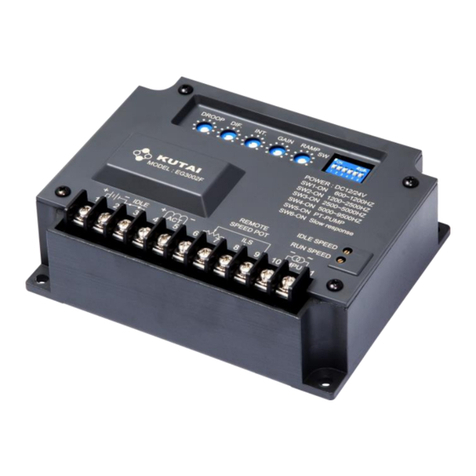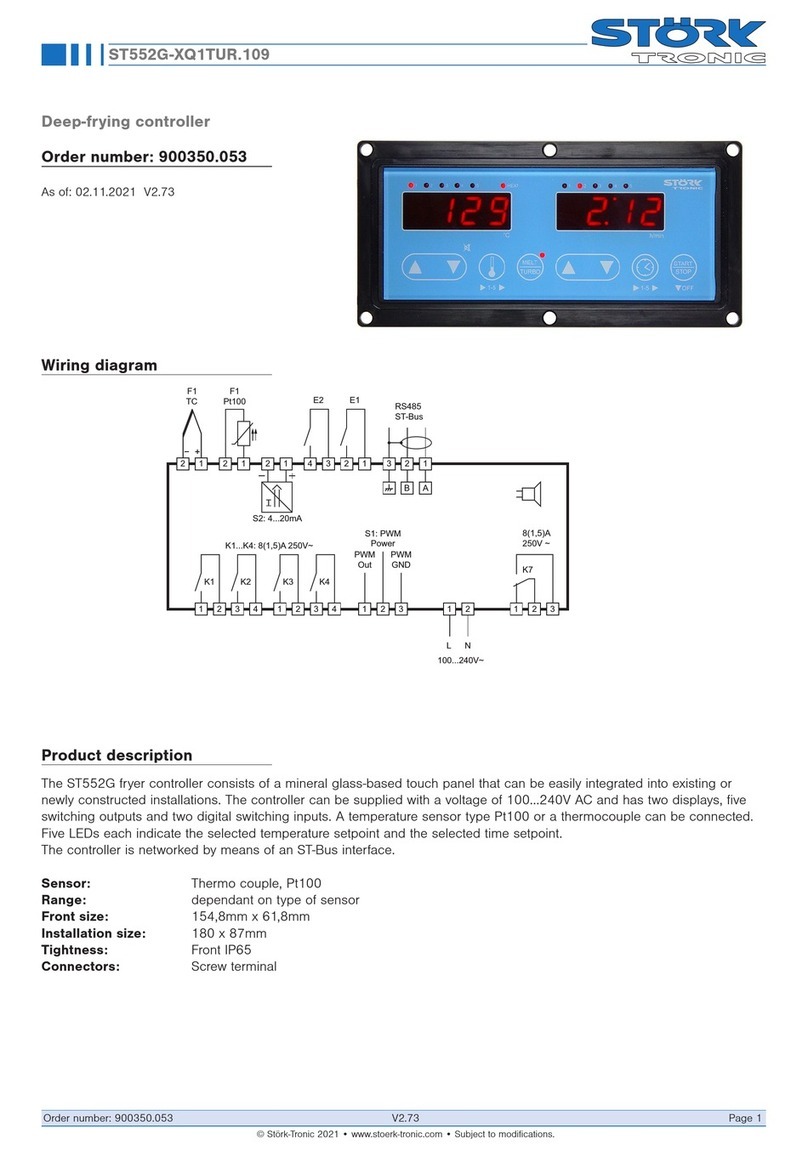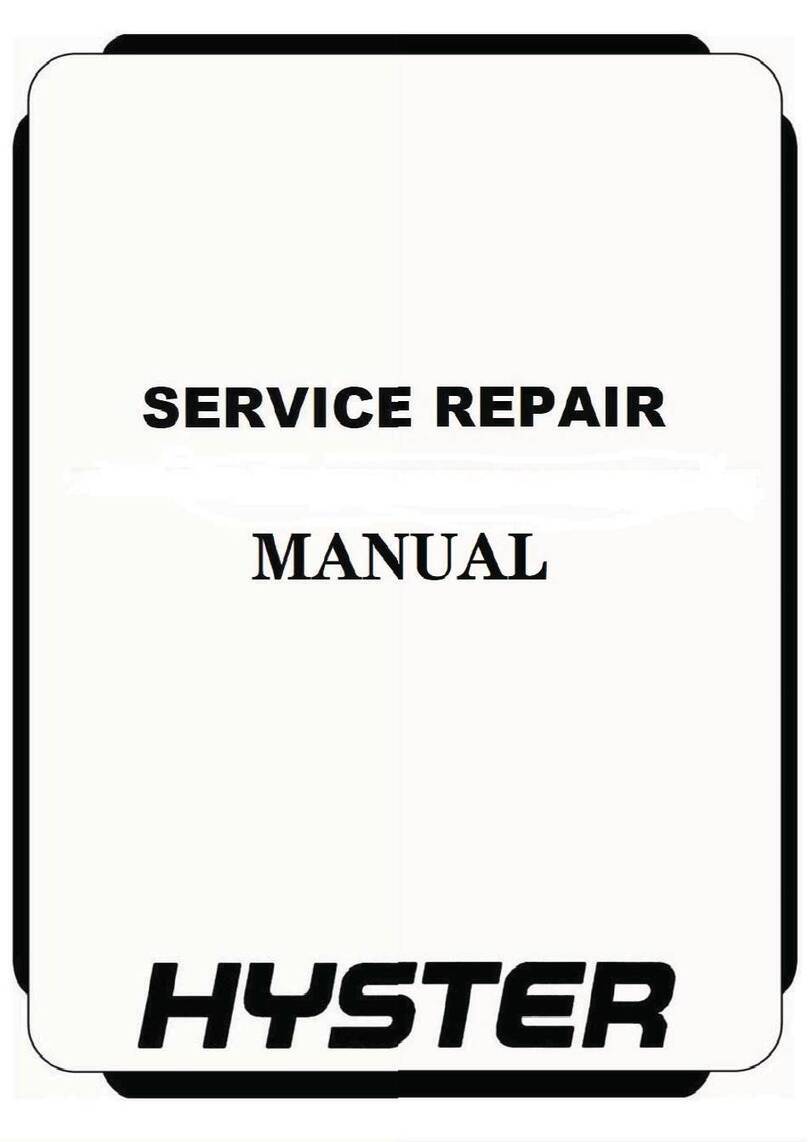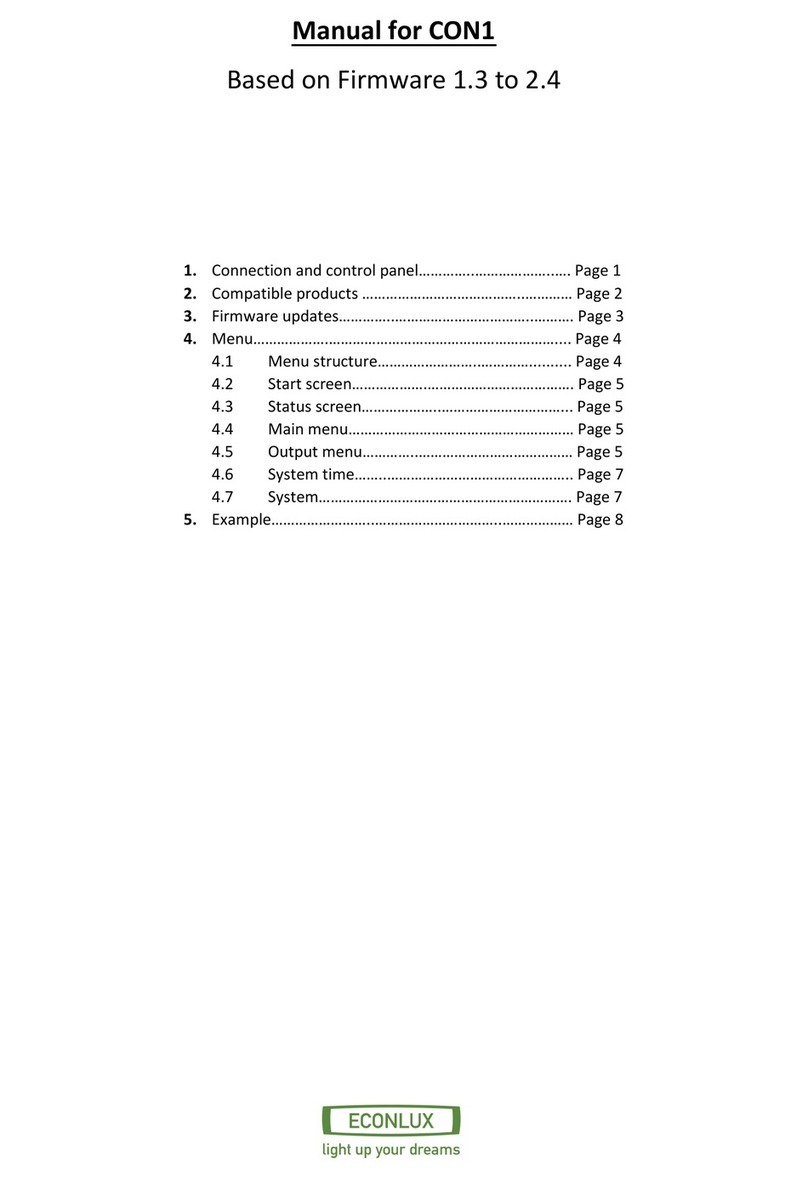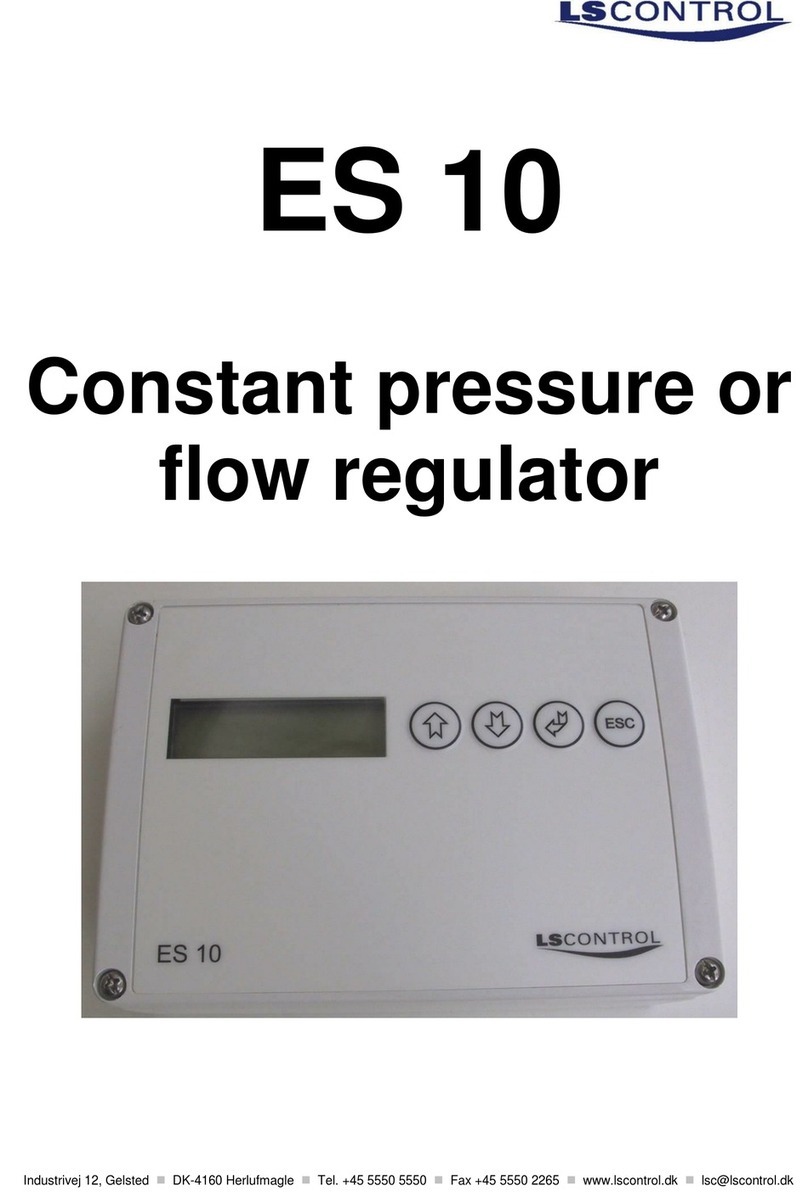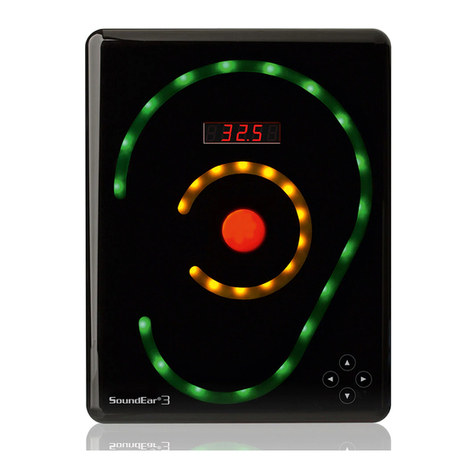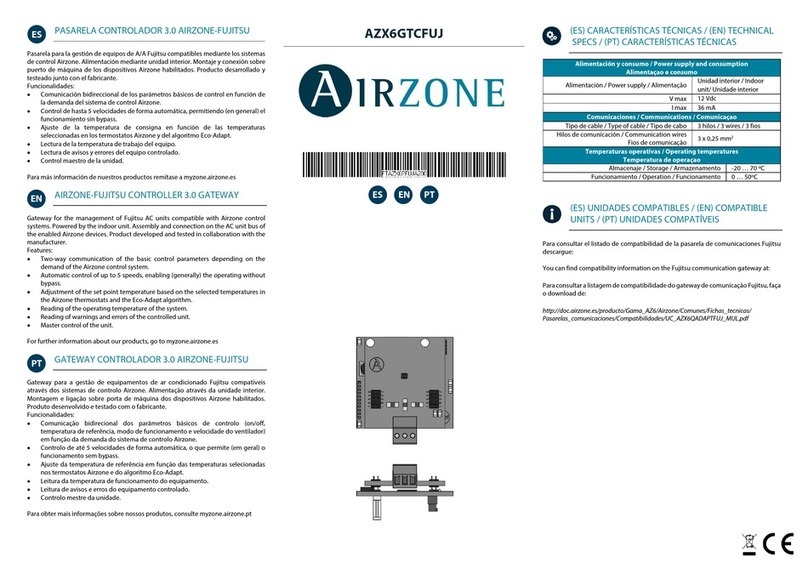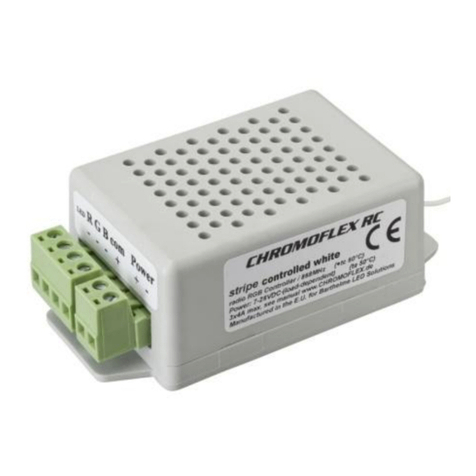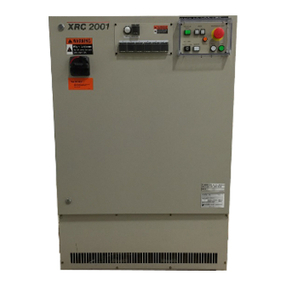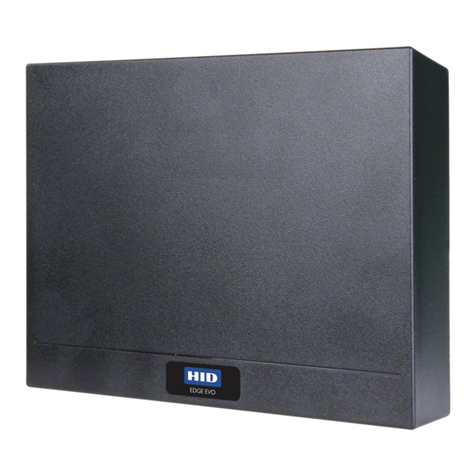Deltran Battery Tender Solar Charger Controller User manual

1
30 AMP 12V/24V
SOLAR CHARGER CONTROLLER
INSTRUCTION MANUAL
for Part Number: 021-1178
Read this material before using this product.
Failure to do so can result in serious injury.
Save this manual
.
392-0707-RA
2
CONTENTS
Important Safety Instruction & Warnings………………….....................
Product Specifications……………………………………………………….
Product Overview……………………………………………………………..
Solar Charger Controller Installation Connections and Operation…..
Additional Solar Charger Controller Information/Warnings…………..
Faults……………………………………………………………………………
Temperature Compensation/Temperature Sensor……………………...
Customer Service…………………………………………………………......
Warranty ………………….………………………….....................................
3
7
7
8
17
18
19
19
20

3
IMPORTANT SAFETY INSTRUCTIONS & WARNINGS
SAVE THESE INSTRUCTIONS: This manual contains important safety and
operating instructions for the Battery Tender® Solar Charger Controller.
CAREFULLY READ THESE INSTRUCTIONS BEFORE USING THE
BATTERY CHARGER.
WARNING AND CAUTION LABEL DEFINITIONS:
WARNING
WARNING indicates a potentially hazardous situation, which, if not
avoided, could result in serious injury or death.
CAUTION
CAUTION indicates a potentially hazardous situation, which, if not
avoided, may result in minor or moderate injury.
CAUTION
CAUTION used without the safety alert symbol indicates a potentially
hazardous situation that if not avoided, may result in property damage.
GENERAL PRECAUTIONS
WARNING
Battery posts, terminals and related accessories contain lead and lead
components, and other chemicals known to the State of California to
cause cancer and birth defects or other reproductive harm. Always wash
your hands after handling these devices.
WARNING
Do not operate the Solar Charger Controller with damaged wiring - Replace
wires immediately if damaged.
4
CAUTION
WORKING WITH LEAD ACID BATTERIES AND CHARGERS: All lead acid
batteries have the potential to emit gasses that may combine into a combustible
or explosive mixture. In many cases, it is possible that lead acid batteries will
emit these gasses during normal discharge and charging operations. Because of
this potential danger, it is important that you follow the precautions
recommended by both the battery and battery charger manufacturers before
using either one. For example, do not exceed the recommended maximum
recharge rate (charger output current limit), or remove cell caps while charging
flooded batteries.
CAUTION
SOLAR CHARGER CONTROLLER LOCATION: LOCATE the Solar Charger
Controller as far away from the battery as possible and in a well-ventilated area
inside.
EXCESSIVE MOISTURE: Do not expose the Solar Charger Controller to any
rain, snow, spray, or moisture of any kind. This device is NOT designed for
outdoor use.
CHARGER ATTACHMENTS: Do not use attachments that are not
recommended or sold by the charger manufacturer. To do otherwise may result
in the risk of electric shock, fire, or possibly some other unforeseen potential
personal injury situations.
MONITORING SEALED & NON-SEALED BATTERIES: When leaving a
battery charger connected to either a sealed (AGM or GEL) or non-sealed
(flooded battery) for extended periods of time (weeks, months, etc.), periodically
check the battery to see if it is unusually warm. This is an indication that the
battery may have a weak cell and that it could go into a thermal runaway
condition. If the battery releases an excessive amount of gas or if the battery
gets hotter than 130F (55C) during charging, disconnect the charger and allow
the battery to cool. Overheating may result in plate distortion, internal shorting,
drying out or other damage. For flooded batteries, also check individual cell fluid
levels against manufacturer's recommendations for safe operation.

5
WARNING
ELECTRIC SPARK & OPEN FLAME: NEVER smoke or allow a source of
electric spark or open flame in the vicinity of the battery or engine. (For example:
Don't charge the battery next to a gas water heater.)
VENTILATION: Do not operate the Solar Charger Controller where ventilation
is restricted. The intent here is to allow sufficient airflow to minimize and
dissipate the heat generated by the Solar Charger Controller and to diffuse the
gasses that may be emitted by the battery.
SOLAR CHARGER CONTROLLER MAINTENANCE: NEVER DISASSEMBLE
OR ATTEMPT TO DO INTERNAL REPAIRS. THIS VOIDS THE WARRANTY.
Disassembling the Solar Charger Controller incorrectly may result in the risk of
electric shock or create a fire hazard.
USE BATTERY TENDER® SOLAR CHARGER CONTROLLER FOR
CHARGING 12V/24V LEAD-ACID OR 12V/24V AGM OR 12V LITHIUM
BATTERIES ONLY. Do NOT charge dry-cell batteries. Charging dry-cell
batteries may cause them to burst and cause injury to persons and damage to
property.
INFORMATION NOTE ABOUT DRY-CELL BATTERIES:
There are some wet, non-spillable, lead acid batteries on the market whose
manufacturers' make the claim that they are dry-cell batteries. These batteries
are sealed, gas-recombinant, starved electrolyte, possibly with AGM (Absorbed
Glass Mat) type construction. It is perfectly safe to use the Battery Tender®
Solar Charger Controller to charge these types of batteries. The dry-cell battery
warning is intended for rechargeable or non-rechargeable alkaline and other
similar types of batteries. If you have any doubt about the type of battery that
you have, please contact the battery manufacturer before attempting to charge
the battery.
NEVER charge a visibly damaged or frozen battery.
6
PERSONAL PRECAUTIONS
WARNING
WHEN YOU WORK NEAR LEAD-ACID BATTERIES:
1. Someone should be within range of your voice or close enough to come to
your aid if you have an accident.
2. Have plenty of fresh water and soap nearby in case battery acid contacts
skin, clothing, or eyes.
3. Wear complete eye protection and protective clothing. Avoid touching your
eyes while working near a battery. If battery acid contacts your skin or
clothing, wash immediately with soap and water. If acid enters an eye,
immediately flood the eye with running cold water for at least 10 minutes and
get medical attention as soon as possible.
4. Be extra cautious when handling metal tools around a battery. If you drop a
metal tool near a battery it might spark or create a short circuit between the
battery terminals and some other metal part. Either event may cause a
dangerous electrical shock hazard, a fire, or even an explosion.
5. Remove all personal metal items such as rings, bracelets, necklaces, and
watches when working with a lead-acid battery. A lead-acid battery can
produce a short-circuited current high enough to weld a metal ring or other
piece of jewelry, causing a severe burn.

7
PRODUCT SPECIFICATIONS
BATTERY TENDER® SOLAR CHARGER CONTROLLER
Max Input Voltage 50 Volt
Max Input Power 12Volt 450Watt / 24Volt 900Watt
Max Output 12VDC, 30Amp
USB Output 5VCD, 2x, 3.4 Amp Max
Controller Part Number 021-1178
Working Temperature 14 to104°F (-10 to 40°C)
Dimensions Length 7.5", Width 4.25", Height 2.0"
Warranty 2 years
Certification CE
PRODUCT OVERVIEW
Below is a list of items that should be included in your retail box:
1) 1 - Solar Charger Controller
2) 1 - Temperature Sensor Cable
3) 1 - Instruction Manual
8
SOLAR CHARGER CONTROLLER
INSTALLATION CONNECTIONS AND OPERATION

9
FRONT PANEL
SEE NEXT PAGE FOR EXPLANATIONS
10
FRONT PANEL DESCRIPTIONS
1. Temperature Sensor
2. Solar panel + positive input
3. Solar panel - negative input
4. Battery + positive output
5. Battery - negative output
6. Load + positive output
7. Load - negative output
8. LCD Screen (see next page for descriptions)
9. Solar panel Charging Green LED – Flashes during charging, turns solid
when fully charged. If insufficent sun light the LED will not illiminate. Error
warning Red LED – Red inicates a fault (see fault section for details).
10. Scroll up and down Menu buttons.
11. Enter/OK button
12. Menu button.
13. USB output – 5VDC, 3.4 Amp Max, 2X.
14. One of four mounting slots.

11
LCD DESCRIPTIONS
1. Sun icon displayed when solar panel is connected.
2. Sunlight rays, 8 in total, shows the charging current rate. (1-8).
3. PWM indication.
P
ulse
W
idth
M
odulation.
4. Settings icon: turn on when entering the setting parameters and turn off
when exiting.
5. Battery level icon; displays icons according to the battery voltage.
6. Load icon: turns on when the load is turned on, synchronized with the load
switch ON.
7. Connections: Three segments. Top corresponds to PV, middle
corresponds to battery, bottom corresponds to load.
8. Currently identified battery type (12/24V).
9. Protection icon. When this icon appears, it indicates that the controller has
some protection such as load overcurrent, short circuit protection, under-
voltage protection, etc. (Refer to the fault code).
10. Load timing clock 2.
11. Load timing clock 1.
12. Daytime and Nighttime Icons. When PV is > 12V the half sun icon will
appear. When PV is <12V the half-moon icon will appear.
13. Numerical Display (8888 characters). Can be switched by the menu button
to display Battery Voltage/Load Voltage/PV voltage/time.
12
LCD MENU SETTINGS
1. To enter the menu screen press the menu button once, then press again and hold
for two (2) seconds. The settings icon will then appear and the first LCD settings
screen will also appear. To move to the next LCD settings screen press the menu
button.
2. Battery Type Selection
There are three (3) battery chemistry types
to chose from. S=Standard lead acid.
L=Lithium. A=AGM. Press the enter button
and the battery type will flash. Then use the
up/down scroll button to change the battery
type. Press enter button to set. Press menu
button to move to the next LCD screen.
3. Low Voltage Protection Cut Off Value
When your battery reaches this voltage the
output load will be turned off. Press the
enter button and the voltage# will flash.
Then use the up/down scroll button to
change the voltage. Press enter button to
set. Default is set at 10.0V. Press menu
button to move to the next LCD screen.

13
4. Low Voltage Recovery Re-engage
When your battery voltage has charged
back up to this voltage the outload will
reactivate. Press the enter button and the
voltage# will flash. Then use the up/down
scroll button to change the voltage. Press
enter button to set. Default is set at 12.5V.
Press menu button to move to the next LCD
screen.
5. Time Setting (24hr Military time)
Set the time in military 24hr format. Press
the enter button and the hour# will flash.
Then use the up/down scroll button to
change the hour. Press enter button to set.
The minute# will then flash. Then use the
up/down scroll button to change the
minutes. Press enter button to set . Press
menu button to move to the next screen.
LOAD TIMING SETTEINGS
1. LdU MODE: Load on/off based on the PV input voltage (Day and night)
When the PV input voltage drops below 10V
(during the night hours or cloud cover) you
can set the regulator to activate the output
load automatically. Press the enter button
and the OFF/ON will flash. Then use the
up/down scroll button to change to ON.
Press enter button to set. The clock 1
screen will then appear.
14
Clock 1 Screen
Clock 1 symbol is on. The default is sixty
(60) minutes. This means when the PV
input voltage drops below 10V, sixty (60)
minutes later the load output will be
activated. Clock 1 is a power on timer and
can be set from 0 to 120 minutes. Use the
up/down scroll button to change the
minutes. Press enter button to set . The
clock 2 screen will then appear.
Clock 2 Screen
Clock 2 symbol is on. The default is thirty
(30) minutes. This means when the PV
input voltage rises to 12.5V (morning time)
after thirty (30) minutes the output load will
be shut off. Clock 2 is a power off timer and
can be set from 0 to 120 minutes. Use the
up/down scroll button to change the
minutes. Press enter button to set . This will
then take you back to the LdU screen,
Press enter to move to the next screen.
Ld1 MODE: Load On/Off based on a set length of time
This allows you to set the load output to be
active for a set length of time. Press the
enter button and the OFF/ON will flash.
Then use the up/down scroll button to
change to ON. Press enter button to set.
The clock 1 screen will then appear

15
Clock 1 Screen
Clock 1 symbol is on. The default is three
(3) hours. This means when the PV input
voltage drops below 10V, the output load
will be active for 3 hours. This can be set
from 0 to 12 hours. Use the up/down scroll
button to change the minutes. Press enter
button to set . The clock 2 screen will then
appear
Clock 2 Screen
Clock 2 symbol is on. This timer will begin
after the clock 1 counting has finished. In
this case, after the PV input voltage has
dropped to 10V (night hours), the output
load will power on for 3 hours, then switch
off for 4 hours, then back on again until the
PV input voltage has risen to 12.5V at witch
time the load will be cut off. This can be set
from 0 to 12 hours. Use the up/down scroll
button to change the minutes. Press enter
button to set . This will then take you back
to the Ld1 screen, Press enter to move to
the next screen.
LdS MODE: Load On/Off based on the real time
This allows you to set the output load
based on 24 hour time (military time).
Press the enter button and the OFF/ON will
flash. Then use the up/down scroll button to
change to ON. Press enter button to set.
The clock 1 screen will then appear
16
Clock 1 Screen
Clock 1 symbol is on. This is a power on
timer, and means the output load will be
activated at 5.00. This can be set from 0 to
24 hours. Use the up/down scroll button to
change the hours minutes. Press enter
button to set. The clock 2 screen will then
appear.
Clock 2 Screen
Clock 2 symbol is on. This is a power off
timer, and means the output load will will
shut off at 6.00. This can be set from 0 to
24 hours. Use the up/down scroll button to
change the hours minutes. Press enter
button to set. This will then take you back to
the LDs screen.

17
ADDITIONAL SOLAR CHARGER CONTROLLER
INFORMATION/WARNINGS
1. Wire the solar panels cables into the connector on the controller; make sure
the solar panel input voltage DOES NOT exceed the max limit of the
controller. Wire up the battery’s positive and negative terminals to the correct
connector on the controller (marked by the battery image). The controller will
automatically detect the battery voltage scale it is connected to and charge.
The switchable output is marked with a bulb. This output is designed to run a
modest load(s), such as lights. Read the manual for the full workings of the
controller as you can adjust time as to when the output switches on and off -
ideal for something like security lighting.
2. Maximum 450W solar panel at 12V.
3. Maximum 900W solar panel at 24V.
4. The solar charger controller will automatically detect if you have connected up
to a 12V or 24V battery. It will then charge appropriately.
18
FAULTS
THE RED ERROR LED ON THE FRONT PANEL WILL BE RED IF THERE
IS A FAULT WITH THE OUTPUT REGULATOR.
E1
Battery reverse connection / reverse polarity (please correct).
E2
Battery open circuit protection / low DC voltage (battery not connected / or
battery voltage too low.
E3
Battery over current protection (circuit has constant current function; the
controller may be damaged if there is a problem).
E4
Load over current / short circuit protection (Turn on the load after eliminating
the error).
E5
Battery over voltage (battery damaged or battery voltage too high).
E6
PV (solar) input over voltage protection. (PV voltage has exceeded the limit).
E7
Over temperature protection, controller will automatically stop charging when
the heat sink temperature is ≥90°C; and will resume when the temperature
is ≤60°C.
E8
PV reverse connection (check the voltage and correct) - please ensure
polarity is correct.
NOTE:
Please eliminate the fault according to the error code. If the controller
does not respond after the error is eliminated remove the power source
(battery). If the error persists the controller may be damaged and may need
servicing.

19
CUSTOMER SERVICE
TEMPERATURE COMPENSATION/
TEMPERATURE SENSOR
(Only for Lead Acid/AGM Batteries)
1. The system will automatically adjust the float voltage according to the
ambient temperature. If the external temperature probe is not connected (or
the external temperature is <40°C), it uses (temperature ≥20°C - 5°C) by
default.
2. The voltage may vary when the input energy is insufficient to stabilize the
energy required for the float charging.
3. For 12/24V batteries, when the external probe temperature ≤0°C, the float
charging voltage is 14.1/28.2V.
4. For 12/24V batteries, when the external probe temperature is 0°C~20°C, the
float charging voltage is 13.8/27.6V.
5. For 12/24V batteries, when the external probe temperature ≥20°C, the float
charging voltage is 13.5/27V.
NOTE: If internal head sink temperature exceeds 80 Deg C, the device shall go
into approximately half power mode. Shall resume normal operation when
internal head sink drops below 75 Deg C.
If internal head sink exceeds 90 Deg C, the device shall turn off. It will
resume charging again when temperature drops below 60 Deg C.
For customer support please visit batterytender.com. You can also call our
customer service hotline 877-456-7901. You may also email us
20
WARRANTY
The Battery Tender® Solar Charger Controller comes with a two (2) year limited
warranty against defects or failure (within two (2) years of purchase).
THIS LIMITED WARRANTY IS VOID under the following conditions:
1) The product is misused, subjected to careless handling, or operated under
conditions of extreme temperature, shock, weather, or vibration beyond
our recommendations for safe and effective use.
2) The product is disassembled or repaired by anyone who is not an
authorized service representative.
3) The product was purchased from an unauthorized source. Warranty is not
transferable from the original purchaser.
4) Any physical damage to any of components or any accessory after
purchase.
5) Any modifications to any of the components.
This manual suits for next models
1
Table of contents
Other Deltran Controllers manuals
Popular Controllers manuals by other brands

Lawler
Lawler 804 SEA Deluxe Installation & maintenance manual
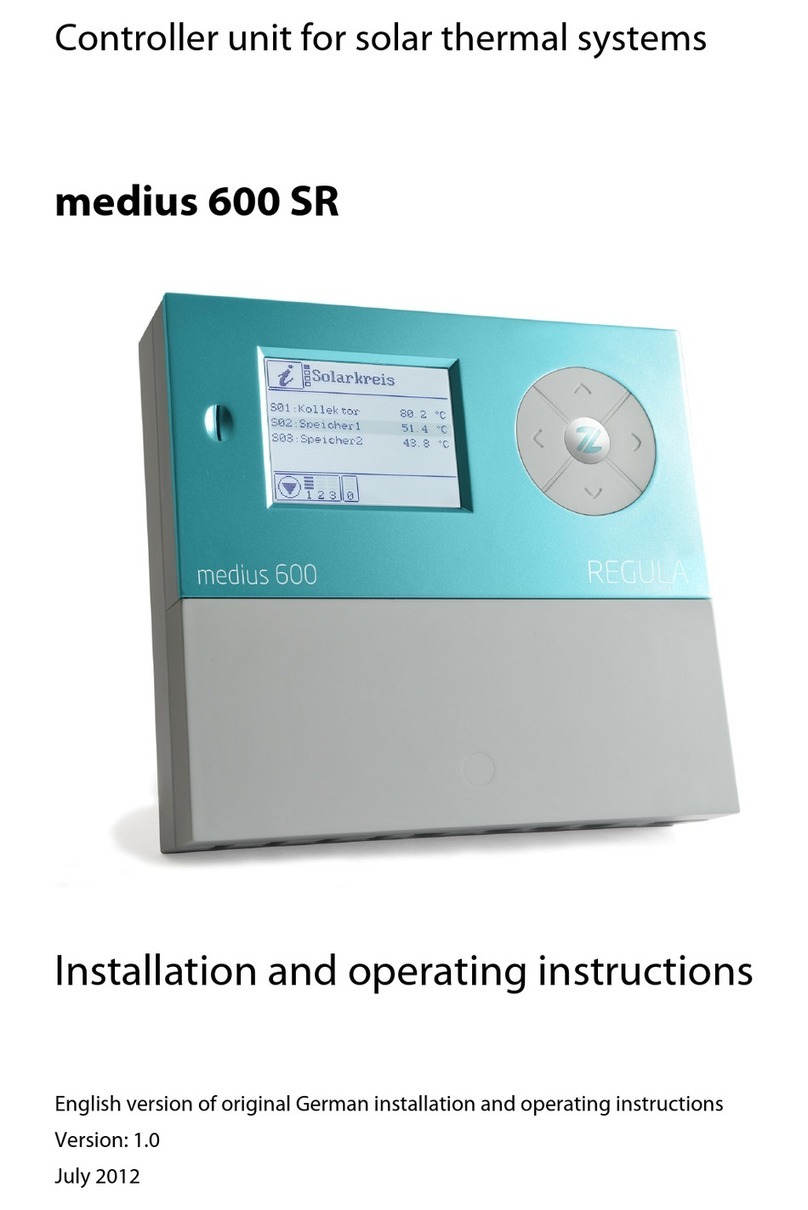
REGULA
REGULA medius 600 SR Installation and operating instructions

Carrier
Carrier XCT7 40VCW217FQEE Installation and owner's manual
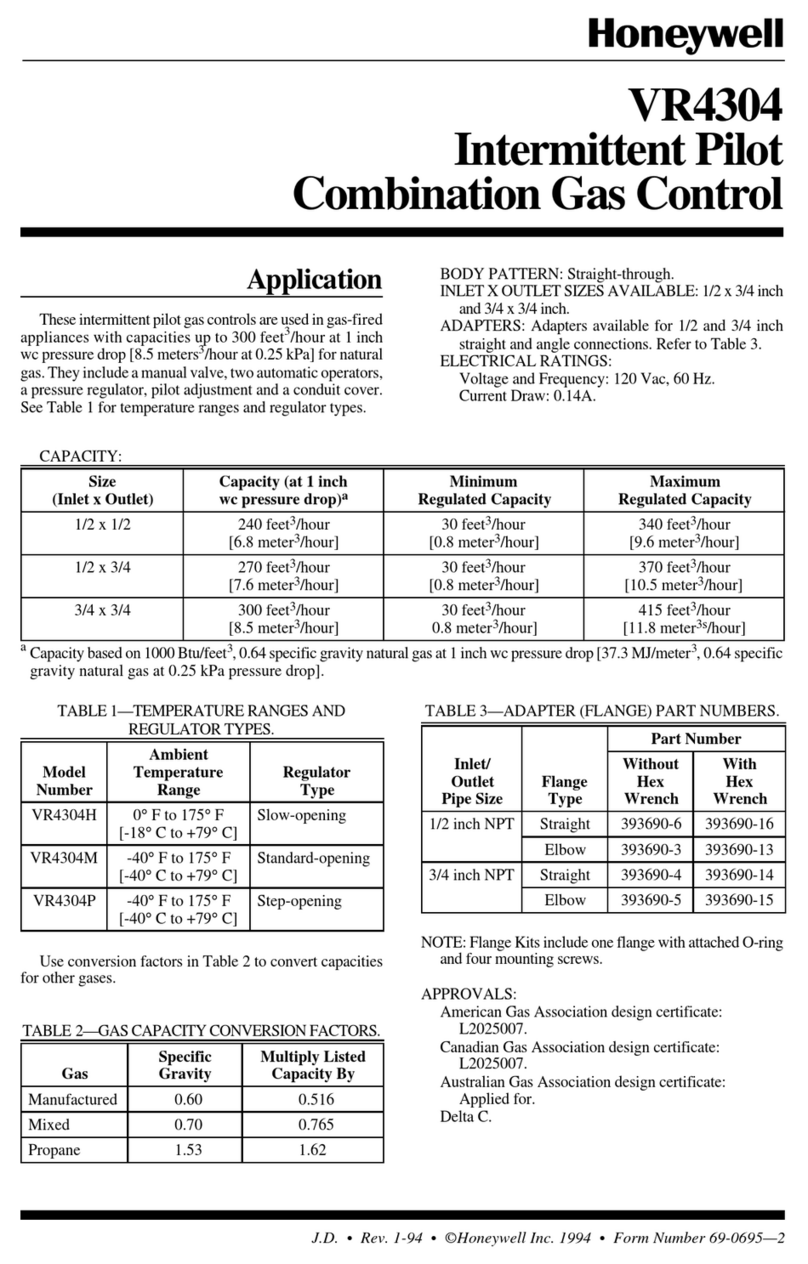
Honeywell
Honeywell VR4304 Series manual
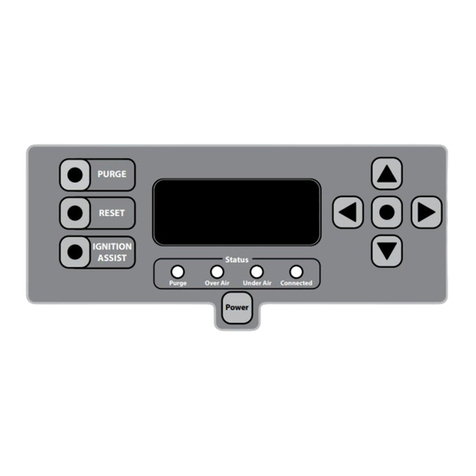
Central Boiler
Central Boiler FireStar Operation manual
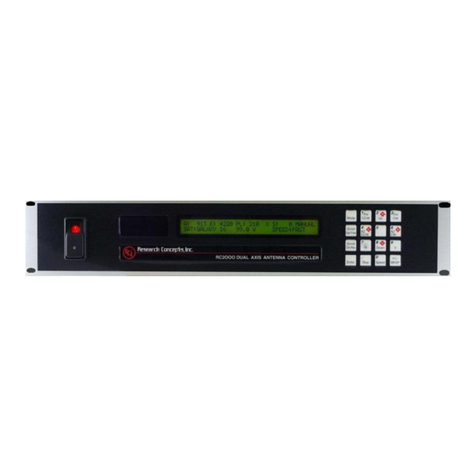
RESEARCH CONCEPTS
RESEARCH CONCEPTS RC2000A DUAL AXIS instructions

